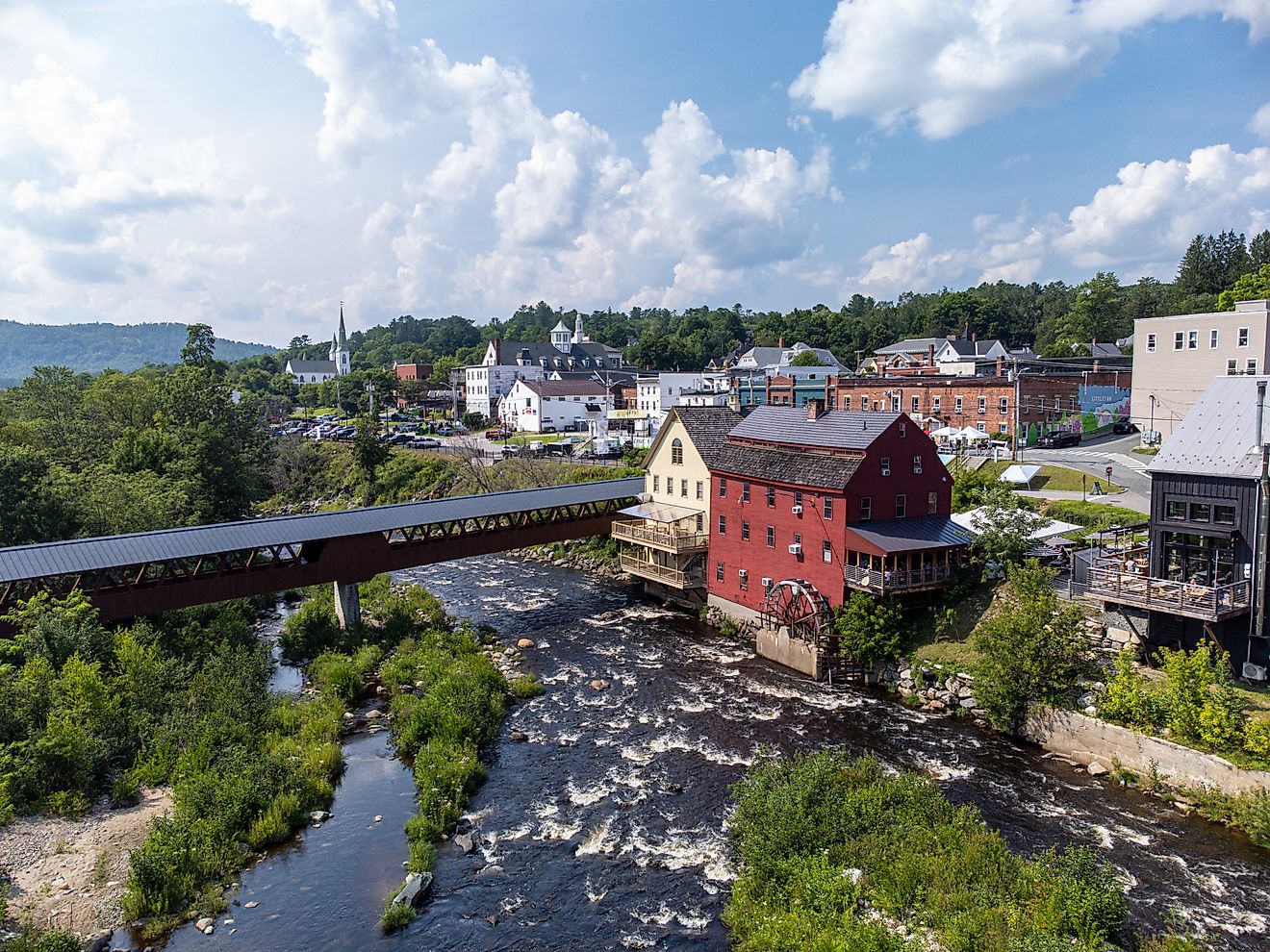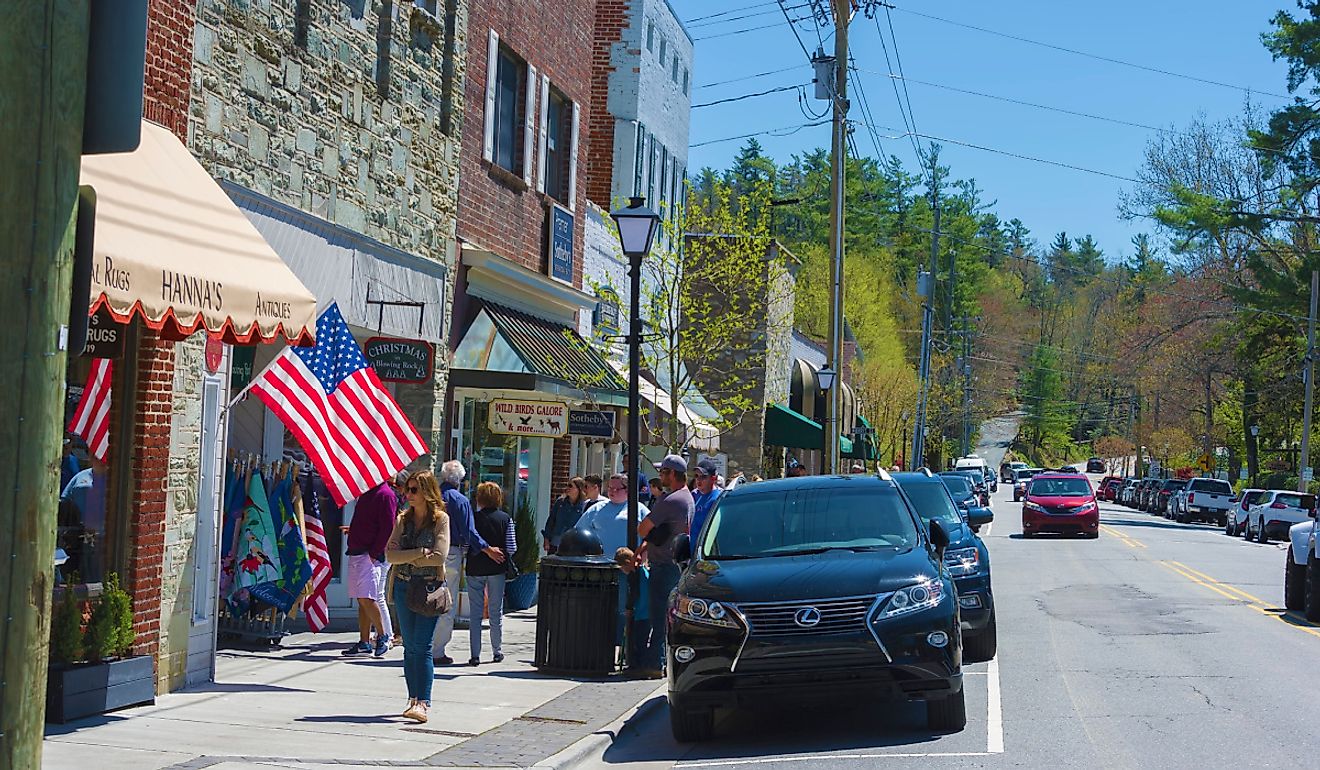
11 Most Hospitable Towns In North Carolina
Millions of years ago, the eastern half of North Carolina was underwater, home to massive megalodon sharks. On land, woolly mammoths and mastodons roamed. The first Native Americans arrived around 10,000 to 12,000 years ago, and eventually, nearly 30 different tribes settled across the state.
In the 1580s, the British attempted to colonize North Carolina but failed twice. Permanent settlers from Virginia arrived in the 1600s, and the area became part of the British colony of "Carolina." By 1775, many believe North Carolina was the first colony to declare independence from Great Britain. After the American Revolution, it became the 12th U.S. state.
During the Civil War, North Carolina joined the Confederacy in 1861 and rejoined the Union in 1868. In the 20th century, the state modernized, with a major milestone being the Wright brothers' first powered flight in Kitty Hawk in 1903. Today, North Carolina is known for its mix of historic towns, thriving cities, and scenic landscapes. With that, here are some of the most hospitable towns in North Carolina.
Blowing Rock
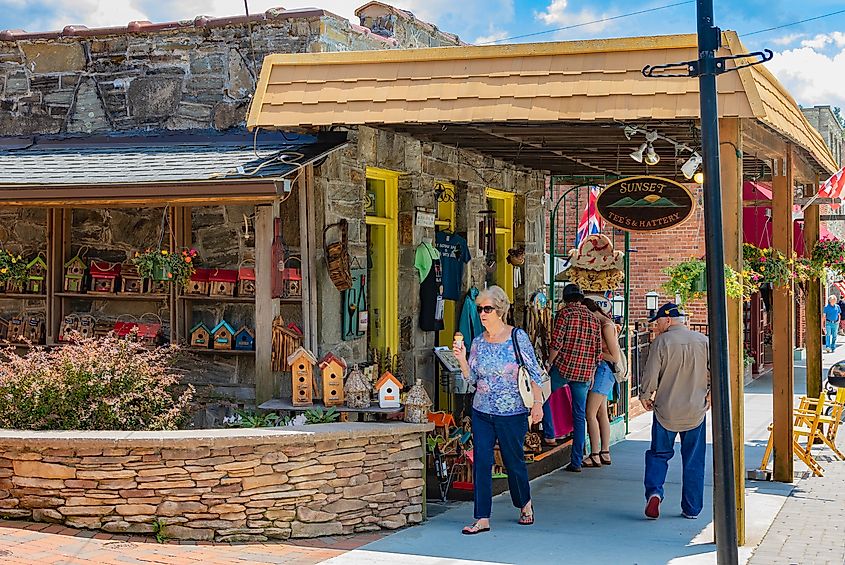
Blowing Rock, named for its famous cliff with an upward wind current, became a mountain retreat in 1889. Before European settlers arrived, the Cherokee and Catawba tribes lived here, often in conflict. According to legend, a Cherokee warrior leaped from the cliff when duty called him away from his Catawba love. The maiden prayed, and powerful winds carried him back into her arms, inspiring the name “The Blowing Rock.” Visitors can see this legendary formation and enjoy stunning views. Besides the Blue Ridge Parkway, tourists can check out Moses H. Cone Memorial Park, which features a historic mansion and miles of trails. The Blowing Rock Art & History Museum showcases regional history and Appalachian art, making it a great stop for history lovers.
Cary

Cary traces its roots to a 1750s settlement called Bradford's Ordinary. However, its true founder was Allison Francis "Frank" Page, who named the town after Samuel Fenton Cary, a Prohibition leader from Ohio. The town was incorporated in 1871, and later, the Seaboard and North Carolina railroads formed a junction there, boosting its growth. Today, Cary is a thriving tech and research hub. Visitors can explore Fred G. Bond Metro Park, a 310-acre space with trails and a lake. Koka Booth Amphitheatre hosts outdoor concerts and festivals. Downtown Cary Park is a modern green space with community events. Page-Walker Arts & History Center, once a railroad hotel, now showcases Cary’s history through exhibits and programs.
Apex
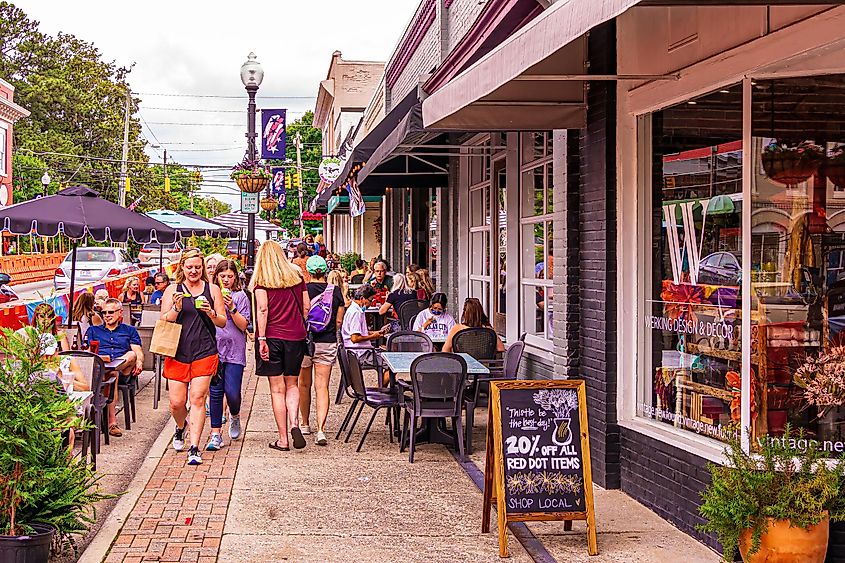
Apex was originally established as a railroad town, with its station chartered in 1854, though trains didn’t pass through until 1869. Located at the highest elevation along a 30-mile stretch of the Chatham Railroad, it served as a key stop where steam engines refilled their water supply before heading to Raleigh. Another reason behind the name Apex is its watershed divide. Rainfall on one side of Salem Street drains into the Neuse River, while on the other side, it flows toward the Cape Fear River. Today, the town features Historic Downtown Apex with well-preserved 19th-century buildings, local shops, and restaurants. Outdoor enthusiasts can visit Jordan Lake for boating and hiking, enjoy performances at the Halle Cultural Arts Center, or explore trails at Apex Nature Park.
Huntersville
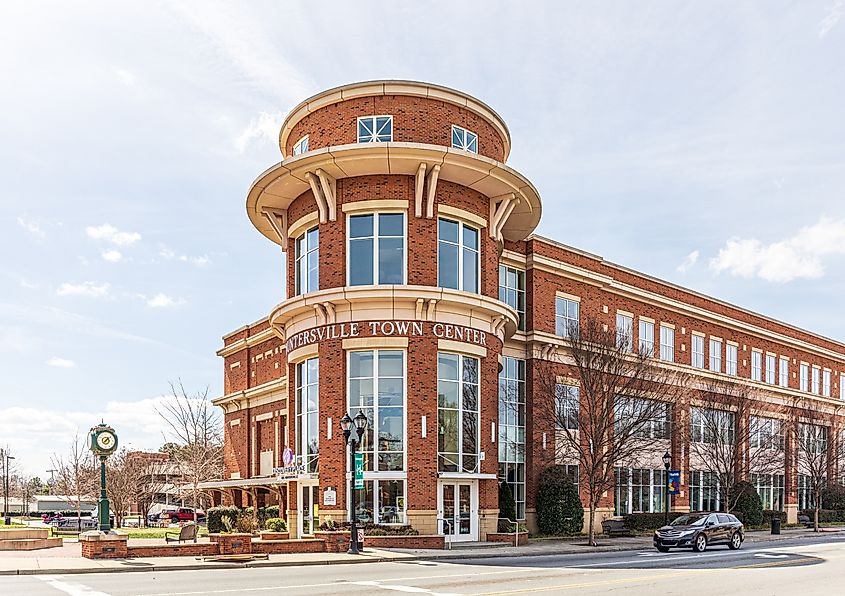
Huntersville was originally settled by Scotch-Irish and German immigrants in the mid-1700s. It was first known as Craighead before being renamed after Robert Boston Hunter, a major landowner and cotton farmer. The Huntersville Cotton Mill, established in 1873, played a key role in the town’s economy, bringing jobs and growth. The Latta Nature Preserve, a 1,460-acre park, offers hiking and kayaking, while the Carolina Raptor Center rehabilitates birds of prey. Birkdale Village is a lively shopping and dining hub, and racing fans can visit Joe Gibbs Racing Headquarters to see exhibits on NASCAR history. The town also hosts various events and festivals, strengthening its community feel.
Chapel Hill

Chapel Hill, founded in 1793, is home to the University of North Carolina, the nation’s first public university. The town was named after New Hope Chapel, which once stood on a hill where The Carolina Inn is today. The town's development is closely tied to the university, as it was specifically planned to support the institution. Nicknamed the "Southern Part of Heaven," Chapel Hill has a deep-rooted history and a strong sense of community. Franklin Street is the town’s bustling center. The North Carolina Botanical Garden focuses on native plant conservation and outdoor exhibits. Morehead Planetarium & Science Center, one of the country’s oldest planetariums, offers educational programs.
Wake Forest

Wake Forest began in 1832 when the North Carolina Baptist Convention bought Dr. Calvin Jones' 615-acre plantation for $2,000 to establish a school for training ministers. Although its history goes back much further, Wake Forest marked its centennial in 2009 because it was officially rechartered in 1909, when the state granted permission to issue bonds for an electric system. Today, visitors can explore Downtown Wake Forest, Falls Lake State Recreation Area, and the Wake Forest Historical Museum, which preserves artifacts from the town’s early days. E. Carroll Joyner Park features open fields, trails, and historic structures, making it a great place for outdoor activities.
Mooresville
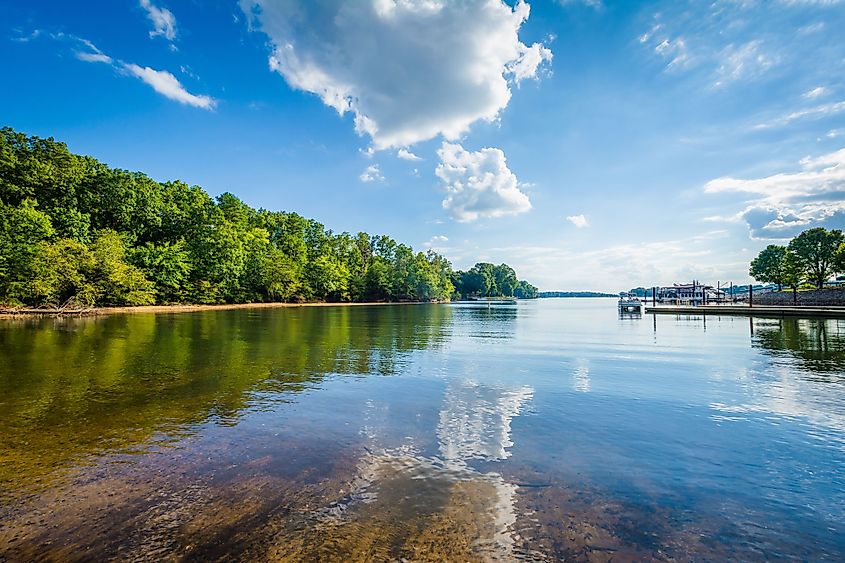
Mooresville was founded in 1824 when Samuel Moore, a North Carolina Quaker, purchased land for $2.00 an acre. He named the town after himself, and by 1831, it had grown to 200 residents. It was officially incorporated in 1838. The Mooresville Chronicle began publishing in 1846 but lasted only four years. In 1872, the town established its first bank, the Savings Bank of Mooresville. Mooresville became known as "Race City USA" due to its strong NASCAR presence. Visitors can explore Lazy 5 Ranch, a drive-through exotic animal park, and Lake Norman, the largest man-made lake in North Carolina. The Memory Lane Museum showcases classic cars and racing history, while Downtown Mooresville features antique shops, breweries, and restaurants.
Holly Springs
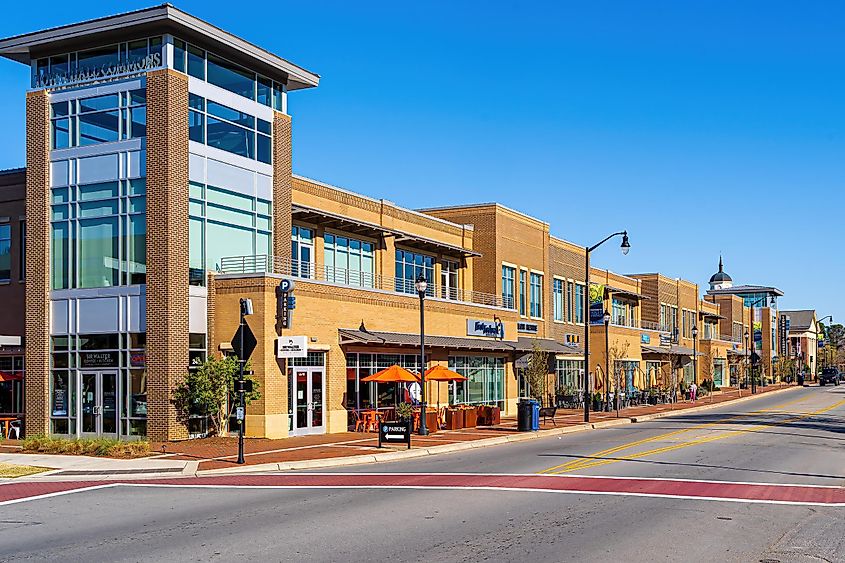
Holly Springs began as a small crossroads where travelers stopped to drink from natural springs surrounded by holly trees. In the 1800s, the town grew due to its location near Raleigh. Today, visitors enjoy locally brewed beer at Carolina Brewing Company and Bombshell Beer Company, one of North Carolina’s first female-owned breweries. Outdoor enthusiasts can fish or hike at Bass Lake Park, which features a stocked 54-acre lake. The Holly Springs Cultural Center hosts theater performances, art exhibits, and the annual Community Arts Festival each January. The Holly Springs Farmers Market is a go-to spot for fresh local produce. Festivals like HollyFest in the fall, the Happy Holly Days Christmas parade, and the Longleaf Festival in May keep the town lively year-round.
Garner

Garner began taking shape in the 1850s when the North Carolina Railroad expanded through the area. In 1847, a tie-breaker vote by the Speaker of the State House of Representatives led to the selection of Garner as the site for a new station on the Goldsboro-to-Charlotte rail line. The town grew around the railroad and later developed into a thriving suburb of Raleigh. Today, visitors can explore Lake Benson Park, which has walking trails, open fields, and kayaking. White Deer Park Nature Center features exhibits on local wildlife and conservation. The Garner Performing Arts Center hosts live theater and concerts in a historic school building. Historic Downtown Garner maintains its small-town feel, making it a great place for a relaxed day out.
Cornelius
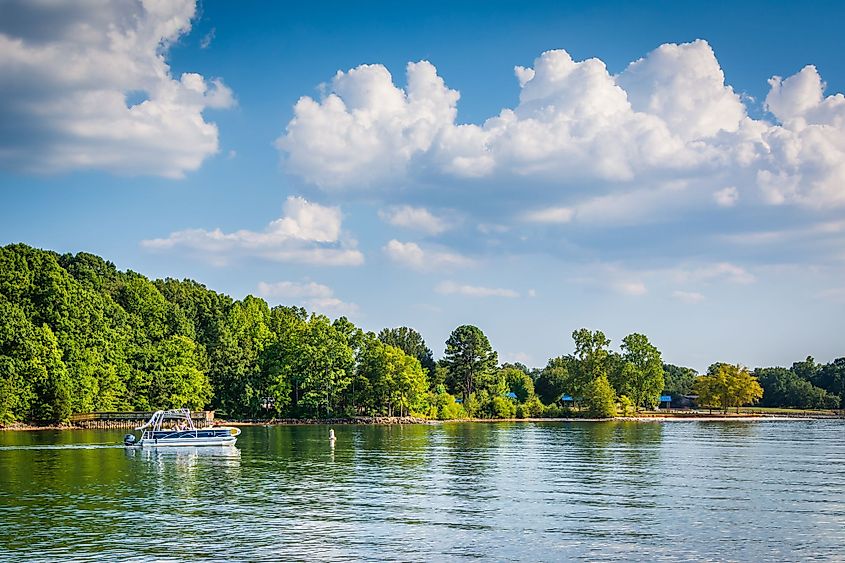
Cornelius traces its roots back to the early 1700s when the Catawba tribe lived in the area, relying on hunting and fishing. As European settlers arrived, the tribe lost much of its land. By the mid-1800s, Cornelius had grown into a transportation and economic hub, driven by the railroad and cotton industry. Joseph Benjamin Cornelius, a cotton farmer and merchant, played a key role in its development. Today, Cornelius is a thriving lakeside town with plenty to do. Jetton Park features scenic trails and views of Lake Norman, while Ramsey Creek Park has public beach access. The Cain Center for the Arts hosts exhibits and performances. Downtown Cornelius is home to craft breweries, local markets, and restaurants, making it a great place to explore.
Morrisville
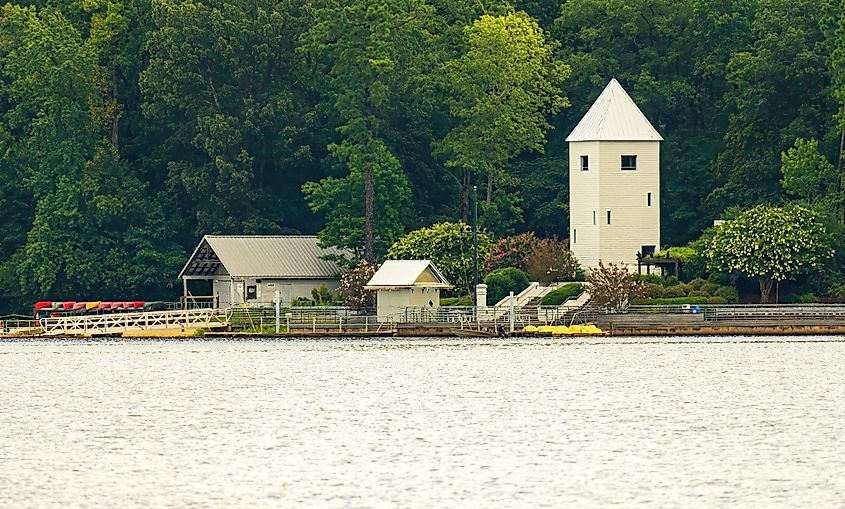
Morrisville is known as the “Heart of the Triangle” due to its central location near Raleigh, Durham, and Chapel Hill. Established around 1852 as a railroad town, it grew into a thriving suburb with a population of approximately 29,968 as of January 2021, according to the Town of Morrisville Planning Department. The town has several outdoor and recreational spots, including the Indian Creek Greenway & Trailhead for walking and biking, and RDU Observation Park, where visitors can watch planes take off and land. Triangle Rock Club offers indoor rock climbing, while Morrisville Community Park has a playground, trails, and picnic areas, making it a great place for families and outdoor enthusiasts.
North Carolina has a long and diverse history, from ancient Native American settlements to colonial struggles, the Civil War, and modern development. The state's towns have grown from railroad stops, cotton mills, and university hubs into thriving communities known for their hospitality. Each town on this list has something unique to offer. No matter where you go in the state, you’ll find friendly faces, historic landmarks, and plenty of things to see and do.



